Greetings All,
After my final evening in Rome, I woke up very early the next day and caught a shuttle with a few other study abroad students to the airport. We arrived roughly four hours before my flight was scheduled to board. I figured it would be alright if I showed up that early because I could just go through security and then hang out at an empty gate. However, I was informed by a baggage agent that KLM, the airlines I was flying with, only opens for boarding three hours before departure. Therefore, I sat on the tile floor outside security and tried to find ways to entertain myself. Eventually, the security checkpoint was opened and I was able to get in front of a whole tour bus load of people. When I got through security, I bought a snack consisting of a Panini and gummy bears. I then relaxed at my gate until my airplane was ready to board.
My trip back home was a little hectic. My flight into Minnesota was delayed due to a storm. Once we were able to land at the airport, we found out that most of the connecting flights had been grounded due to high wind speeds. At one point, the airport staff made an announcement asking all passengers to please stay away from the windows because the winds were strong enough to either break them or throw an object into the glass. Naturally, people went closer to the windows to watch the storm and take pictures. The plane I caught out of Minnesota was about two hours and thirty minutes late. Luckily, this was my last connection. I just kept my family aware of what time I would arrive home. They picked me up around 2:30 am at the airport and my luggage made it just fine. When I got home I went straight to bed. I was exhausted after flying the better part of two days.
Home for me is Alaska.
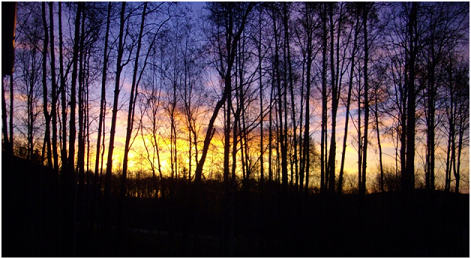 I took this picture from my front porch. This October sunset is just one of the many beautiful views of Alaska.
I took this picture from my front porch. This October sunset is just one of the many beautiful views of Alaska.
Alaska is the largest state in the United States of America and resides in the top left corner of North America west of Canada. Even though Alaska has a gigantic amount of land, relatively few people live here. According to the 2010 Census, there are slightly more than 701,000 inhabitants. Most of the population is concentrated in the main cities: Juneau, our capital, Anchorage, which is the largest city, Wasilla, and Fairbanks. However, there are still a fair bit of people who live in smaller towns and villages located all over Alaska. An interesting fact about Juneau is that even though the city is our capital, it cannot be reached by car. People who would like to visit Juneau must either fly or take a barge. In addition, the city is close enough to glaciers that locals often go swimming in the runoff waters in the summer.
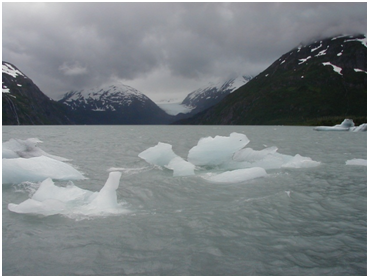 This is a picture of a few ice floes in one of the sounds.
This is a picture of a few ice floes in one of the sounds.
The state is incredibly diverse. Southeast Alaska receives a lot of rainfall and is considered to be almost like Seattle. The Interior experiences extreme temperature changes. In the winter, I remember temperatures reaching as low as -60 degrees Fahrenheit by the river and in the summer around 90 degrees Fahrenheit. Alaska contains the highest peak in North America, Mount McKinley, or as locals refer to it, Denali. Denali means “the great one” in one of the Athabascan dialects. Athabascans are one of the many groups of native indigenous peoples who live here in the Interior.
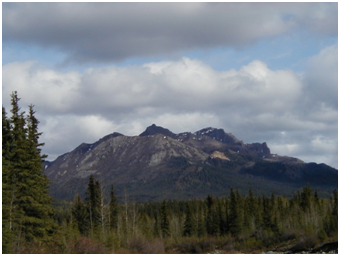 This is one of Alaska’s many mountains.
This is one of Alaska’s many mountains.
I live in Fairbanks, which is also located in the Interior. The Fairbanks North Star Borough, boroughs are our version of counties, has about 32,000 residents. While the city is considered small compared to other metropolises in the United States, we have everything we need. We have grocery stores, schools, the University of Alaska Fairbanks, a mall, a movie theatre, golf courses, boutique shops, local markets, restaurants, many stores, and even a few farms. It’s like an oasis because the closest town, Nenana, is about an hour away by car and is very small. The closest big city is Anchorage, which about six hours away. One of the advantages to living in Fairbanks is that Moose Mountain Ski Resort is just outside of town. In the winter, I often meet friends on the hill to go snowboarding.
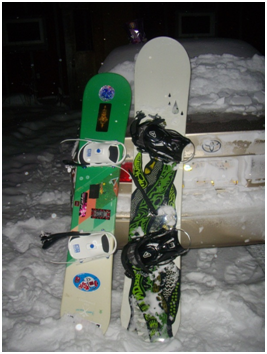 My snowboard standing next to my friend’s board – he’s very tall and I’m short. Some of my friends also enjoy snow machining or four wheeling depending on the season.
My snowboard standing next to my friend’s board – he’s very tall and I’m short. Some of my friends also enjoy snow machining or four wheeling depending on the season.
Even though Alaska has modern amenities, people still live very close to nature. Some college students choose to live in “dry cabins” because they are very inexpensive. These cabins can be a ways out of town and do not have running water or electricity. Wood stoves are used for heat and water is hauled in by truck. Personally, I live in a subdivision a few miles out of town.
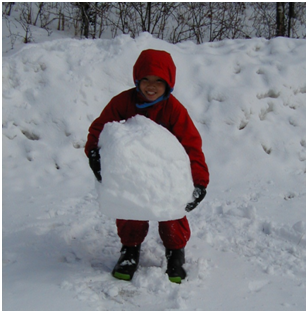 This is a picture of me when I was about 5 or six years old. I’m demonstrating proper winter attire while carrying the head for my snowman. The road is not paved and we don’t have a well or city water. As a result, we have a holding tank that a water truck fills every few weeks. However, we do have electricity and internet, both for which I am thankful.
This is a picture of me when I was about 5 or six years old. I’m demonstrating proper winter attire while carrying the head for my snowman. The road is not paved and we don’t have a well or city water. As a result, we have a holding tank that a water truck fills every few weeks. However, we do have electricity and internet, both for which I am thankful.
Though Alaska is very beautiful and modern, there is always one thing to keep in mind: If you don’t know what you’re doing, Alaska can kill you. If you know what you are doing, Alaska can still kill you. In the winter, roads become slick with layers of ice and snow and temperatures drop so low that without proper attire, hypothermia sets in within a matter of minutes.
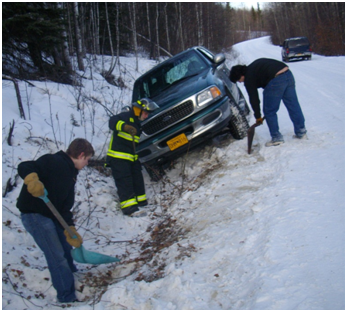 My truck slid into a ditch due to icy roads. Thank you to my friends who helped me to dig it out.Every year people die due to the cold and not dressing warmly enough. Sometimes, moose wander across roads or into lawns, causing car accidents or threatening the safety of people and pets in yards. In the summer, people like to go camping. If they are unprepared, they risk being visited by a hungry grizzly bear. However, as long as people know what to do, such as staying away from moose and not keeping food at their campsite, most of the time they should be fine.
My truck slid into a ditch due to icy roads. Thank you to my friends who helped me to dig it out.Every year people die due to the cold and not dressing warmly enough. Sometimes, moose wander across roads or into lawns, causing car accidents or threatening the safety of people and pets in yards. In the summer, people like to go camping. If they are unprepared, they risk being visited by a hungry grizzly bear. However, as long as people know what to do, such as staying away from moose and not keeping food at their campsite, most of the time they should be fine.
Two common misconceptions about Alaska are: that it is always winter and that there is nothing to do. While our summer is short, Alaska does experience about three months of the season. Two seasons that we experience very briefly are fall and spring. Each lasts only a few weeks. Furthermore, there are plenty of outdoor activities to do, such as canoeing, rock climbing, hiking, biking, or having bonfires. In the past, I have gone to laser tag, soccer and hockey games, and various street fairs. For a more historical view of my state, there are always the gold dredges, gold mines, saloons, and national parks. Since cities are so isolated from each other, they often are very self-sufficient and are full of entertainment. This, in combination with the natural beauty of the land, makes Alaska a very popular tourist destination, it most definitely a place to visit if you are ever in the area.
Thank you for reading.

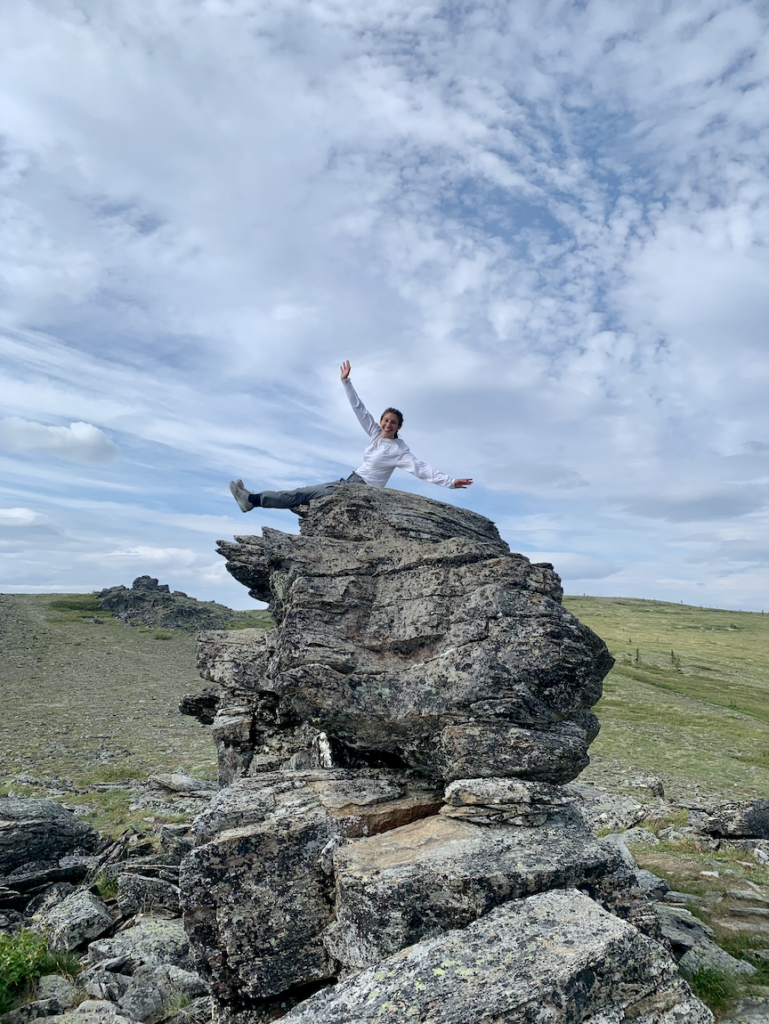


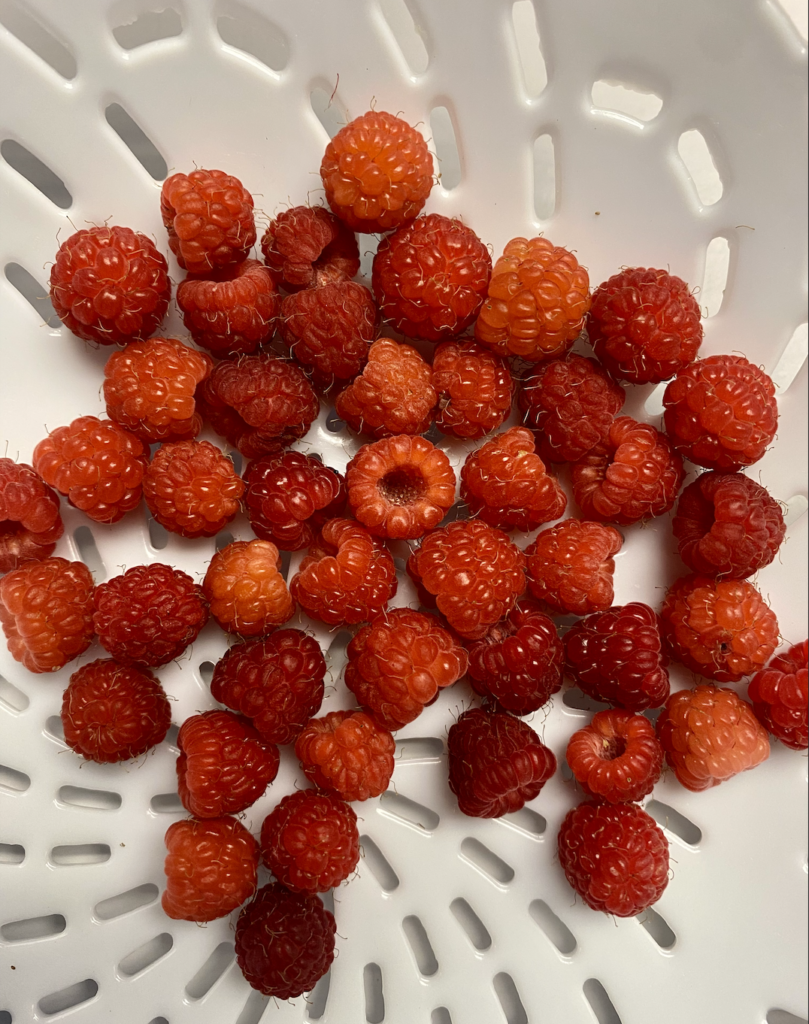
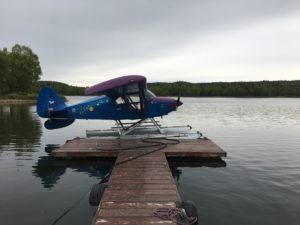
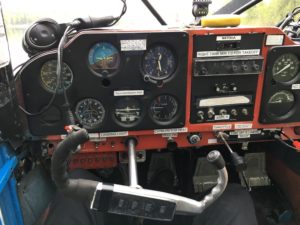
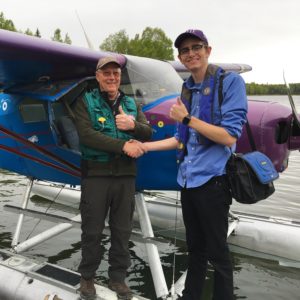
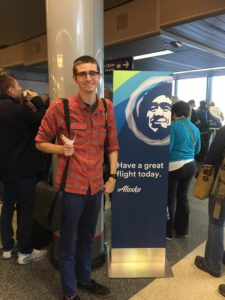
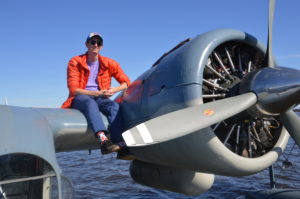
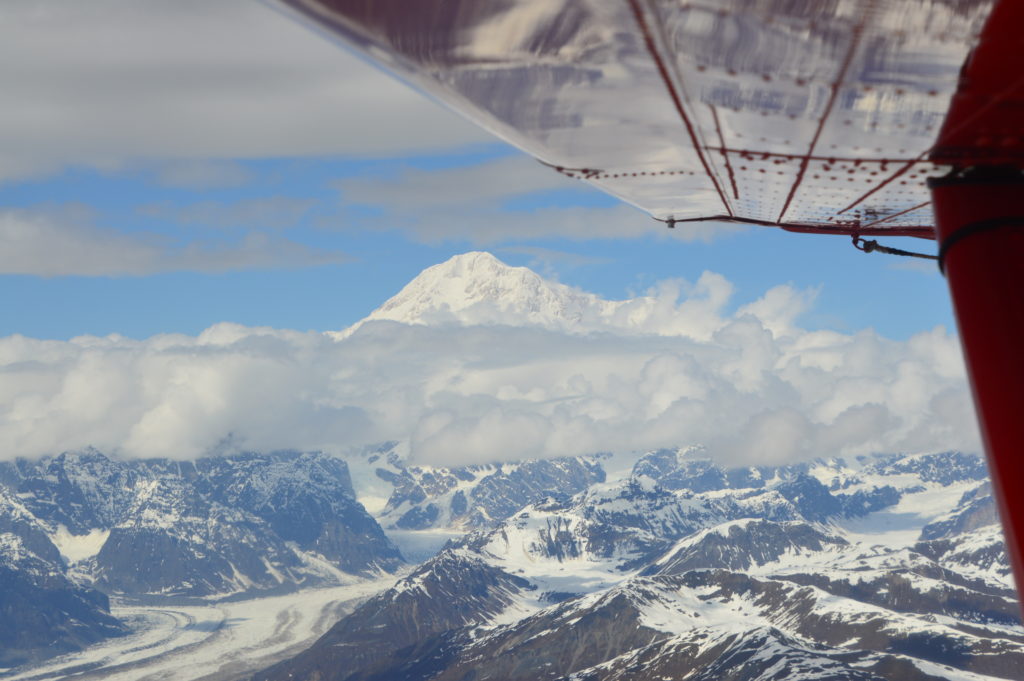
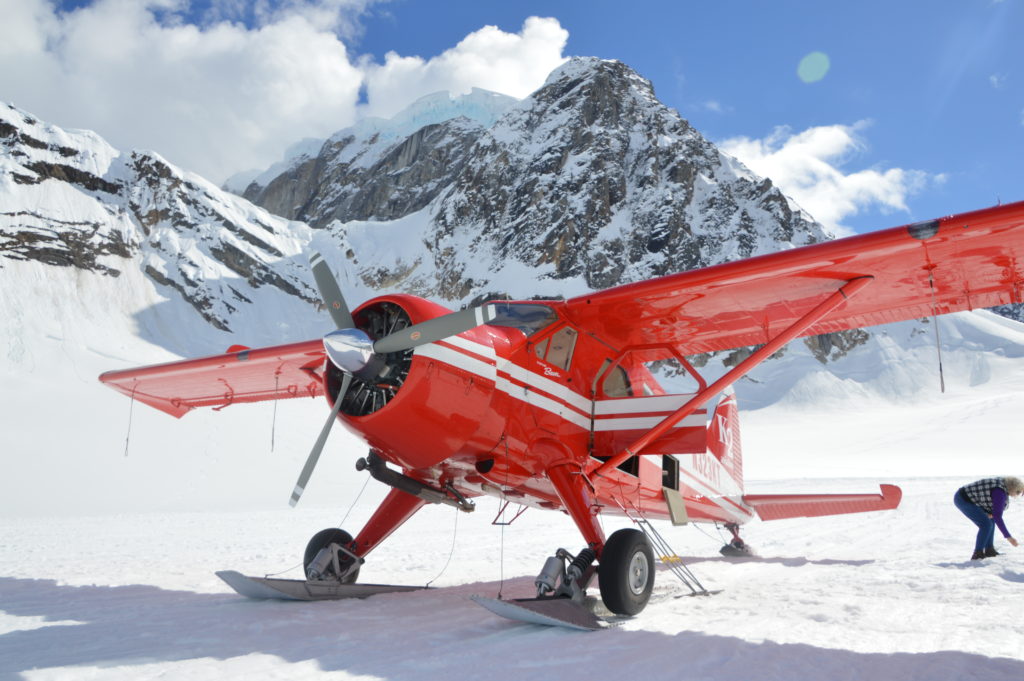
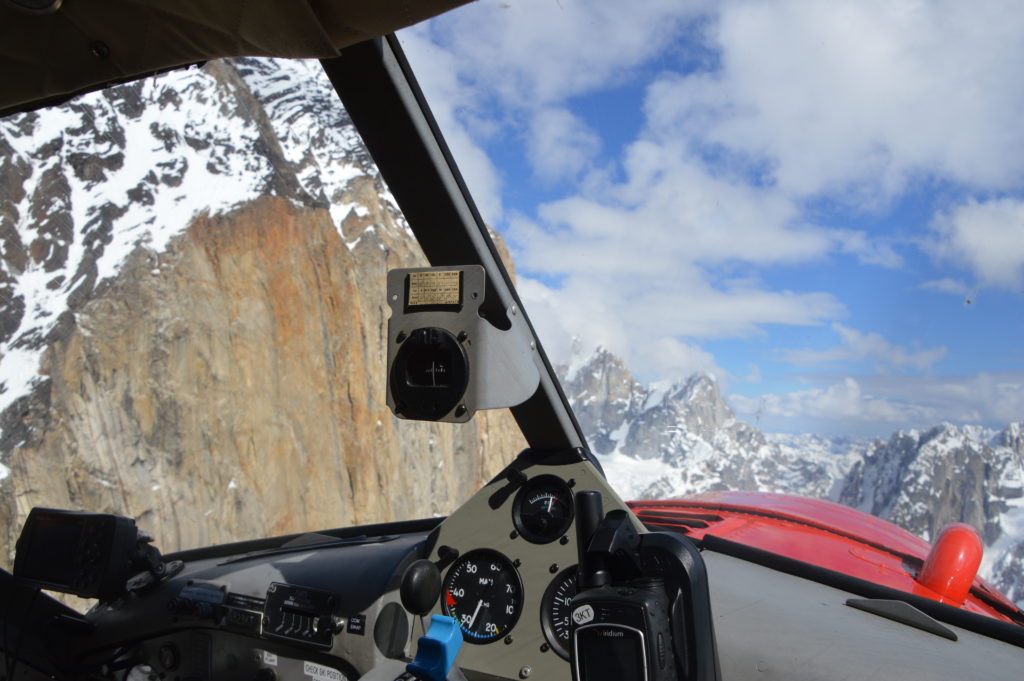

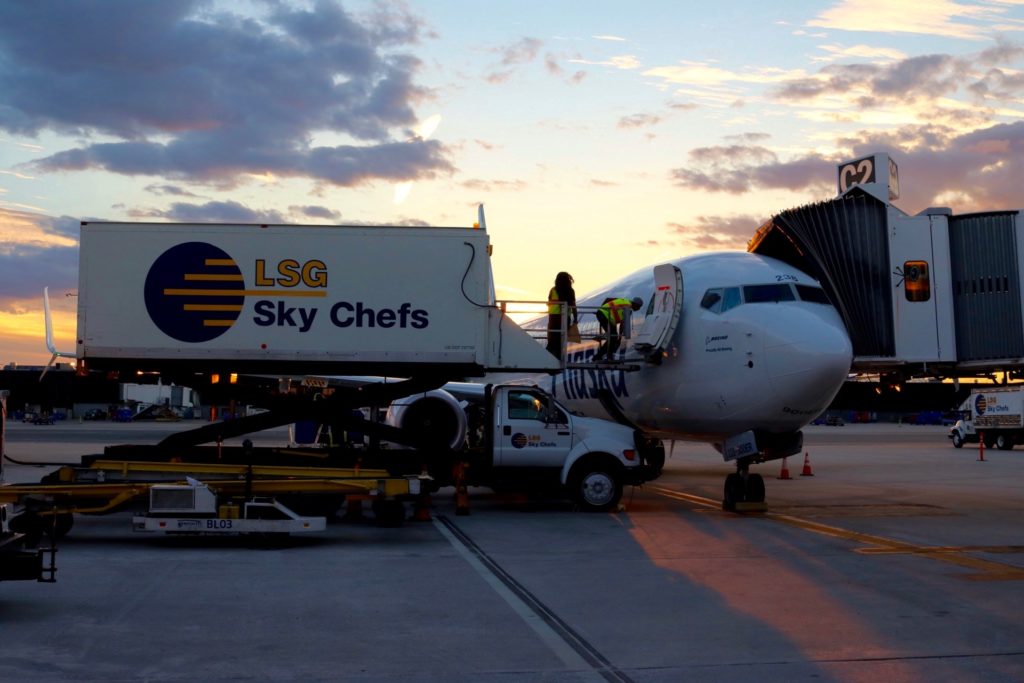
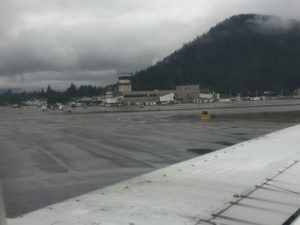

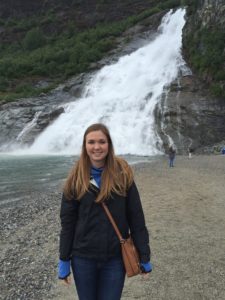
 I took this picture from my front porch. This October sunset is just one of the many beautiful views of Alaska.
I took this picture from my front porch. This October sunset is just one of the many beautiful views of Alaska.  This is a picture of a few ice floes in one of the sounds.
This is a picture of a few ice floes in one of the sounds.  This is one of Alaska’s many mountains.
This is one of Alaska’s many mountains.  My snowboard standing next to my friend’s board – he’s very tall and I’m short. Some of my friends also enjoy snow machining or four wheeling depending on the season.
My snowboard standing next to my friend’s board – he’s very tall and I’m short. Some of my friends also enjoy snow machining or four wheeling depending on the season. This is a picture of me when I was about 5 or six years old. I’m demonstrating proper winter attire while carrying the head for my snowman. The road is not paved and we don’t have a well or city water. As a result, we have a holding tank that a water truck fills every few weeks. However, we do have electricity and internet, both for which I am thankful.
This is a picture of me when I was about 5 or six years old. I’m demonstrating proper winter attire while carrying the head for my snowman. The road is not paved and we don’t have a well or city water. As a result, we have a holding tank that a water truck fills every few weeks. However, we do have electricity and internet, both for which I am thankful. My truck slid into a ditch due to icy roads. Thank you to my friends who helped me to dig it out.Every year people die due to the cold and not dressing warmly enough. Sometimes, moose wander across roads or into lawns, causing car accidents or threatening the safety of people and pets in yards. In the summer, people like to go camping. If they are unprepared, they risk being visited by a hungry grizzly bear. However, as long as people know what to do, such as staying away from moose and not keeping food at their campsite, most of the time they should be fine.
My truck slid into a ditch due to icy roads. Thank you to my friends who helped me to dig it out.Every year people die due to the cold and not dressing warmly enough. Sometimes, moose wander across roads or into lawns, causing car accidents or threatening the safety of people and pets in yards. In the summer, people like to go camping. If they are unprepared, they risk being visited by a hungry grizzly bear. However, as long as people know what to do, such as staying away from moose and not keeping food at their campsite, most of the time they should be fine.